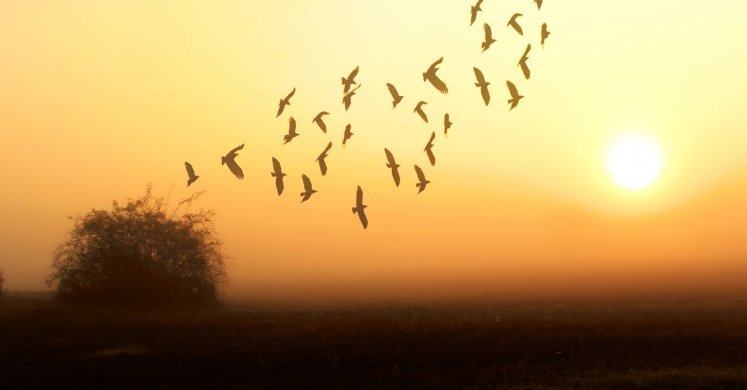Blog

#bioPGH Blog: Flying High in Dark Skies
 A resource of Biophilia: Pittsburgh, #bioPGH is a weekly blog and social media series that aims to encourage both children and adults to reconnect with nature and enjoy what each of our distinctive seasons has to offer.
A resource of Biophilia: Pittsburgh, #bioPGH is a weekly blog and social media series that aims to encourage both children and adults to reconnect with nature and enjoy what each of our distinctive seasons has to offer.
Fall migration is well underway for our feathered friends, and Pennsylvania has already seen quite a few nights of high traffic in the skies. If you’re a fan of BirdCast, you can watch for predictions of high-travel and watch real-time data of birds migrating across the continent. But this year, the journey will be a little safer for birds as they travel over the Pittsburgh area. Last month, Pittsburgh adopted a Dark Sky Lighting ordinance to reduce light pollution and lower energy costs while still maintaining light for safety. This actually has an array of benefits impacting everything from finances to human health, but it also makes traveling safer for birds since the dazzling lights of cities can be disorienting for migrating birds. Let’s learn a bit more about this, shall we?
A key point to remember here is that even though images of geese flying south are a symbol of autumn days, most birds actually migrate at night. Wind conditions are usually more favorable for long flights, and a number of birds use the stars for navigation. It is also presumed that night flight is safer for smaller birds as hawks and other bird predators are more likely to be diurnal, and it also seems that night flights keep the birds cooler as they expend tremendous amounts of energy on their journeys.
Though nocturnal road trips have their advantages, in the last several decades, birds have encountered new obstacles in their migrations: the bright lights and tall buildings of cities. Birds can’t properly interpret the reflections of windows, which means they don’t understand they are heading into a solid object. Additionally, they are attracted to the bright, yet confusing, lights of larger cities. This can have devastating results, like last week’s mass bird mortality event in New York City where hundreds of birds hit windows overnight on September 13 and were found dead on the sidewalks the following morning.
This year, though, birds flying over Pittsburgh will hopefully have smoother sailing as the city and several of the area’s cultural institutions, including Phipps Conservatory, have committed to bird-friendly lighting with the Dark Sky Lighting ordinance! This will mean retrofitting old lights and planning ahead for the installation of new ones, but this will also contribute to healthier lighting patterns for city residents (less artificial lighting to interfere with sleep cycles) plus a distinct advantage to wildlife who also need the dark. You can read about the City’s full plans here.
Is There Anything Else We Can Do to Help Migrating Birds?
Yes! We share our lands and skies with our wild neighbors, so it’s important to be a good neighbor. Here are a few things we call can do!
Preventing Window Strikes – Birds can’t process the reflective sight of a window like we can, which means window strikes (birds literally flying into windows) is one of their biggest conservation threats. And it’s not just high-rises that can be a problem; any window can be tricky to a bird. However, we can help by making windows more visible to birds! BirdSafe Pittsburgh has a number of suggestions, including adding some fun décor like cut-outs to your windows, applying films or decals, or even selecting bird-friendly glass.
Lights Out - Light pollution can interfere with birds’ navigation on their flights, but we can help by turning off unneeded lights at night. The City of Pittsburgh made the decision to reduce artificial lighting, and we all can do the same at home.
Keep Cats Indoors – The single biggest, directly human-caused threat to birds is an outdoor cat. Depending on the estimate, outdoor cats kill 1-4 billion wild birds a year, but we can make a huge difference here by spaying/neutering pet cats and keeping them indoors. This helps prevent unwanted kittens (and perpetuating feral cat populations) and it keeps Duchess and Mr. Fluffles just a little bit safer themselves.
So let's all pitch in a bit to keep our birds a little bit safer on their annual journey! It's kind of exciting to think how much of a positive difference we really can make, isn't it?
Continue the Conversation: Share your nature discoveries with our community by posting to Twitter and Instagram with hashtag #bioPGH, and R.S.V.P. to attend our next Biophilia: Pittsburgh meeting.
Images: Pexels, public domain

